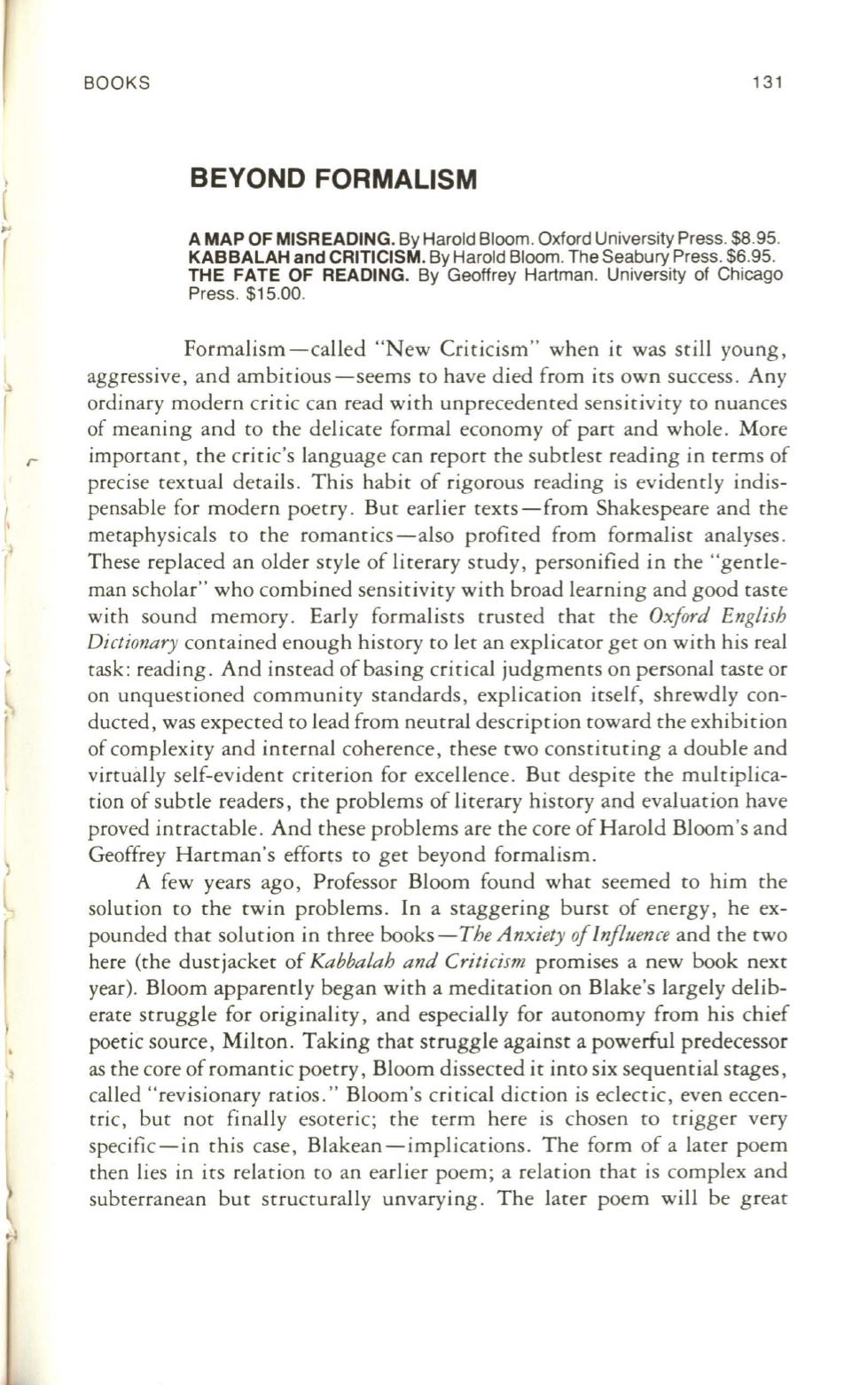
(
~
r
r
BOOKS
131
BEYOND FORMALISM
A MAP OF MISREADING.
By Harold Bloom. Oxford University Press. $8.95.
KABBALAH and CRITICISM.
By Harold Bloom. The Seabury Press . $6.95.
THE FATE OF READING.
By Geoffrey Hartman. University of Chicago
Press. $15.00.
Formalism-called "New Criticism" when it was still young ,
aggressive , and ambitious -seems to have died from its own success . Any
ordinary modern critic can read with unprecedented sensitivity to nuances
of meaning and to the delicate formal economy of part and whole . More
important , the critic's language can report the subtlest reading in terms of
precise textual details. This habit of rigorous reading is evidently indis–
pensable for modern poetry . But earlier texts -from Shakespeare and the
metaphysicals
to
the romantics-also profited from formalist analyses .
These replaced an older style of literary study, personified in the "gentle–
man scholar" who combined sensitivity with broad learning and good taste
with sound memory . Early formalists trusted that the
Oxford English
Dictionary
contained enough history to let an explicator get on with his real
task : reading. And instead of basing critical judgments on personal taste or
on unquestioned community standards , explication itself, shrewdly con–
ducted, was expected to lead from neutral description toward the exhibition
of complexity and internal coherence, these two constituting a double and
virtually self-evident criterion for excellence . But despite the multiplica–
tion of subtle readers, the problems of literary history and evaluation have
proved intractable . And these problems are the core of Harold Bloom's and
Geoffrey Hartman's efforts to get beyond formalism .
A few years ago, Professor Bloom found what seemed to him the
solution to the twin problems. In a staggering burst of energy, he ex–
pounded that solution in three books -
The Anxiety of Influence
and the two
here (the dust jacket of
Kabbalah and Criticism
promises a new book next
year). Bloom apparently began with a meditation on Blake's largely delib–
erate struggle for originality, and especially for autonomy from his chief
poetic source, Milton. Taking that st ruggle against a powerful predecessor
as the core of romantic poetry, Bloom dissected it into six sequential stages ,
called "revisionary ratios. " Bloom's critical diction is eclectic, even eccen–
tric , but not finally esoteric; the term here is chosen
to
trigger very
specific-in this case, Blakean-implications. The form of a later poem
then lies in its relation to an earlier poem; a relation that is complex and
subterranean but structurally unvarying. The later poem will be great


